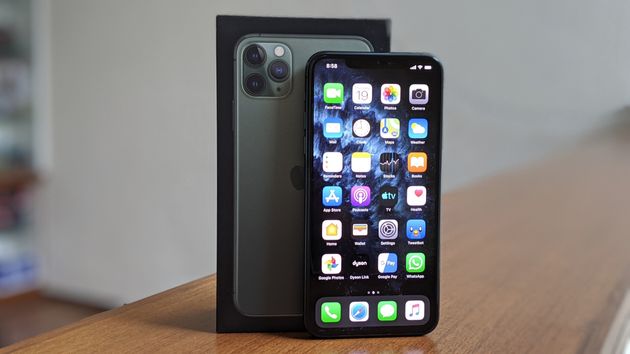iPhone 11 Pro Max Review: One For The Pros?

The iPhone’s gone “Pro”, finally… a label Apple has reserved in the past for its flagship class of products — iPad Pro, MacBook Pro, iMac Pro-aimed at the professionals who need the extra firepower and all-out feature set, those who don’t balk at the sticker shock that the Pro nomenclature entails.
So we have the iPhone 11 Pro and the iPhone 11 Pro Max (quite the mouthful, isn’t it?), the best iPhones money can buy… till September 2020 anyway. Both pack in a vastly improved triple-camera setup and processing power, but are they the phones for you?
The iPhone 11 Pro Max and the smaller iPhone 11 Pro will be available from Friday 27 September in 64GB, 256GB and 512GB models in midnight green, space gray, silver and gold colorways starting at Rs. 109,900 and Rs. 99,900 respectively.
Both ship with Apple’s latest A13 Bionic chip, a triple-12MP camera setup and contrast and brightness boosted 6.5-inch/5.8-inch Super Retina XDR Displays. We’ve been pushing the bigger iPhone 11 Pro to the Max since the launch, and here are our key takeaways from the experience.
iPhone 11 Pro Max: What’s to like?
The cameras: Arguably the biggest jump in this generation has been in the camera department, where Apple used to be the top of the pile until Samsung, Huawei and Google caught up, and then left it behind. Even until recently, in good light, iPhones managed to take crisp and well-exposed images but it was low light shooting that regularly used to be their undoing.
The new iPhones bring in Apple’s implementation of Night Mode, which uses the improved hardware, extended exposures and algorithmic calculations to brighten up a scene. Based on the images we shot, Apple’s nailed the brief.
To Apple’s credit, it retains the sense of time and place, the “feeling” of the shot, with accurate texture and mood, without making a nighttime shot look like it was bright outside, as much of the competition often does. Night Mode isn’t implemented in a separate mode either—the camera app detects low-light conditions and automatically activates the mode and indicates the number of seconds you’d have to hold the phone steady to take the shot.
The other big gain has been the addition of an ultra-wide camera, which lets you capture much more of that landscape or take dramatic shots up-close to your subjects, without any significant distortion or bending around the edges.
The ultra-wide experience within the Camera app is seamless, almost as if you’re zooming out of the regular view, and even while shooting with the primary shooter, the area “outside the frame” is visible and being captured automatically, which gives you a chance to make adjustments to the composition after the shot is taken. Impressive stuff.
And yes, whether you like the name or not, slow motion selfies videos, or “slofies” are actually a thing now, and this feature is going to see a large amount of use, at least in a certain age group. Videos by and large are an iPhone strength, and the 4K 60 frames per second recording on the wide and ultra-wide cameras is rock solid.